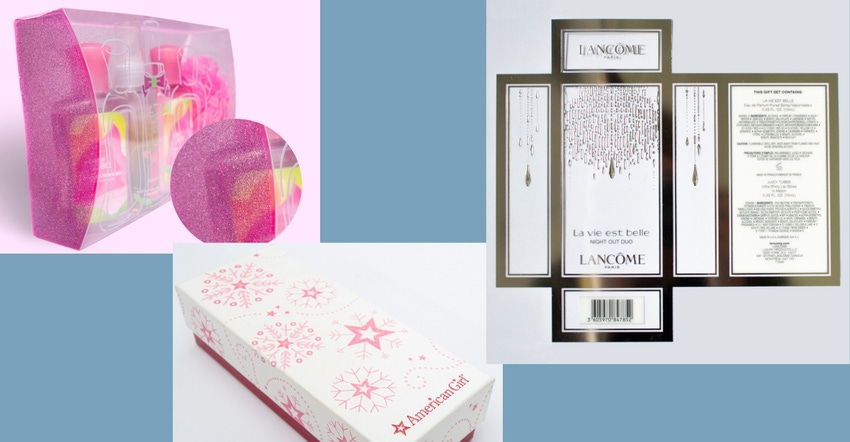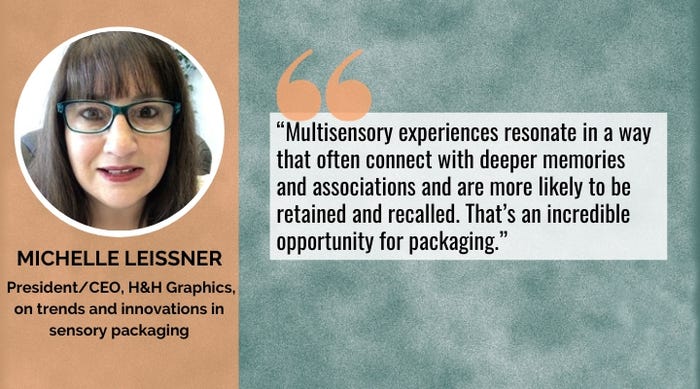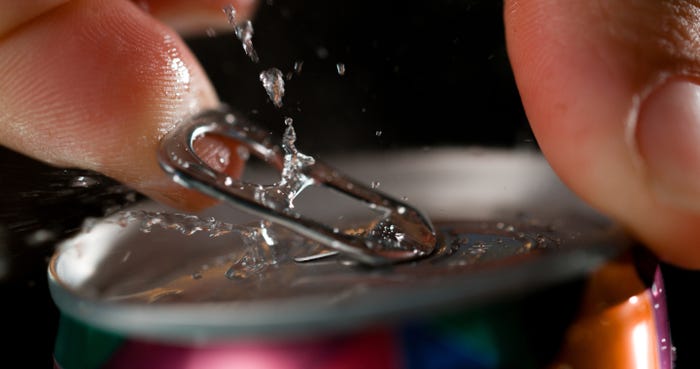Multisensory Packaging Trends Elevate Consumer Engagement
Here are seven ways to use sensory cues on your packaging to entice shoppers and ensure more sales.

Digital advertising tools may be getting slicker all the time, but savvy marketers know there’s often no better real estate for your messaging than right there, on your packaging — as close as you can get to the decision point and sealing the deal that puts product into cart.
It’s not just proximity and timing that makes packaging such an effective means of promotion. It’s the touchable, tangible, texture, and solidity of something you can hold and feel. To say that your packaging message carries more weight with your prospects than its digital version is more than metaphor.
To a degree that may even be growing, the appeal of marketing — and shopping — that takes place in the non-digital realm or “reality,” holds an appeal that the digital experience, for all of its convenience and flash, cannot replicate.

The reasons, of course, are as old as Proust’s tea-soaked Madeleine biscuit and as familiar as your favorite sweater: Multisensory experiences resonate in a way that often connect with deeper memories and associations and are more likely to be retained and recalled. That’s an incredible opportunity for packaging — whether it’s designed for the shelf or doorstep.
So how do you take advantage of such powerful emotional connections to make your packaging do more than just sit there? You incorporate multisensory special effects printing.
Multisensory packaging possibilities are virtually endless.
High quality multisensory special effects printing can add a variety of tactile, scented, visual, and chromic effects to product packaging — dramatically increasing the likelihood of a product standing out on a retail shelf or creating a memorable unboxing experience for ecommerce products.
Multisensory special effects drive curiosity, interaction, brand resonance, and most importantly — sales. They can be used to set a mood, create a sense of anticipation, or even spark a memory or an association. By combining effects to connect across multiple senses, you create an experience that lingers and an association that can be used to boost brand loyalty.
Multisensory details let you do more with less so you can meet your sustainability targets without short-changing customer engagement. Lightweight folding cartons made from recycled materials are transformed into an extraordinary experience with special effects that include scent, texture, glitter, embossing, foil stamping, soft-touch, pearl, or custom textures.
The possibilities are virtually limitless, as some of the world’s best-known brands have demonstrated, with multisensory packaging that delivers both tactile and digital bells and whistles.
But you don’t have to create a spectacle of virtual reality to tap into the ROI of multisensory packaging. You just have to find the right combination of effects for your brand or your product. Sometimes it’s as simple as a candle company adding scented sample cards to its ecommerce packaging so the experience of unboxing a candle includes an array of other possibilities.
Touch it, smell it, buy it.
Multisensory special effects packaging works on multiple levels to draw attention, stimulate engagement and, ultimately, drive sales.
It starts with something as simple as a touch. Packaging that gets touched is well on its way in its journey from shelf to cart or from unboxing to a re-order.
The science is only added proof of a phenomena that intuition and experience have already confirmed; when you reach out to touch a product, you’re already thinking about owning it.
That’s why scents and textures and chromic effects have such solid packaging return on investment (ROI). It’s hard not to pick up packaging that tempts you with luxurious or interesting textures, intriguing scents, or the lure of a hidden message. That’s more than a package — it’s an experience.
What are your sensory packaging options?
Here is an overview of multisensory effects that can be used separately or in combination to create a packaging experience unique to your brand or product:
1. Texture: Glitter, foils, embossing, or specialty texture applications can evoke a sense of luxury or recreate a more literal tactile effect, like the nubby leather surface of a football or the velvety touch of a baby blanket.
2. Digital interaction: Incorporating interactive elements like Quick Response (QR) codes or scannable tags stimulates curiosity and engaging visual experiences. The photochromic “Snapshot Effect” reveals a hidden message or promotion when a flash photo is viewed on a mobile phone — with the bonus effect of encouraging people to share the image across social media channels.
3. Scents: Scented special effects tap into what is considered the most powerful sensory experience of all, with scent occupying some of the brain’s most potent real estate. Scent carries powerful associations and the ability to create moods, stimulate memories, and evoke a sense of nostalgia, excitement, glamour, health, or whatever you’re looking to inspire. High-quality and long-lasting scents can recreate the smell of everything from tacos to freshly mown grass. A campaign by Ford to drive sales of electric cars included a fuel-inspired fragrance designed to inspire memories of road trips and other gasoline-scented nostalgia. And speaking of tacos, nobody who ever opened a package covered in taco-scented wrapping paper ever forgot the experience.
4. Thermochromic printing can be used to create a hidden promotion and reveal it when it is exposed to the heat of a touch.
5. Hydrochromic printing gives up its secrets when exposed to water or other liquids, like a spritz of perfume.
6. Glow-in-the-dark effects are another great way to incorporate hidden messaging and promotions and create a sense of mystery.

7. Sound is an emerging area of sensory possibility, especially among high-end food products in competitive markets. Research into the sound made by the opening of a beer bottle or can was identified as a potentially promising packaging differentiator.
Don’t overlook multisensory ROI.
No matter what you put inside a package, multisensory special effects on the outside can drive interest, brand resonance, and ROI. In combination, multisensory special effects let you create a one-of-kind, neuroscience-backed experience that leaves an impression on your prospects. Whether it’s a special promotion or a foundational brand-building design, don’t overlook the opportunity to go beyond visual effects with multisensory innovation.
Michelle Leissner is president and CEO of H&H Graphics, an award-winning multisensory screen printing company specializing in helping business owners, brand managers, and product developers leverage the power of multisensory special effects. In 2021, Leissner was one of six industry leaders named to Screen Printing magazine’s annual list of Women in Screen Printing award winners for her ongoing leadership and innovation in multisensory screen printing.
About the Author(s)
You May Also Like




